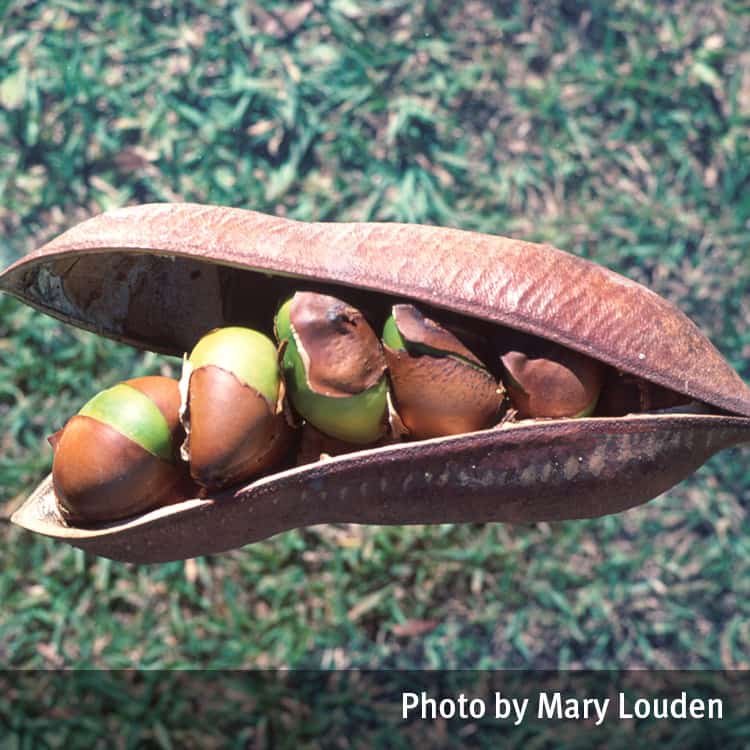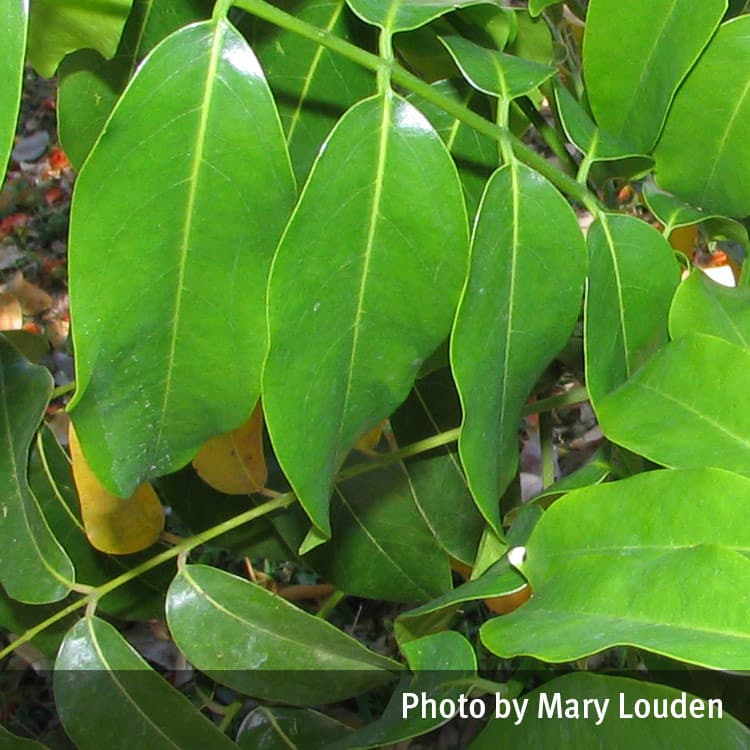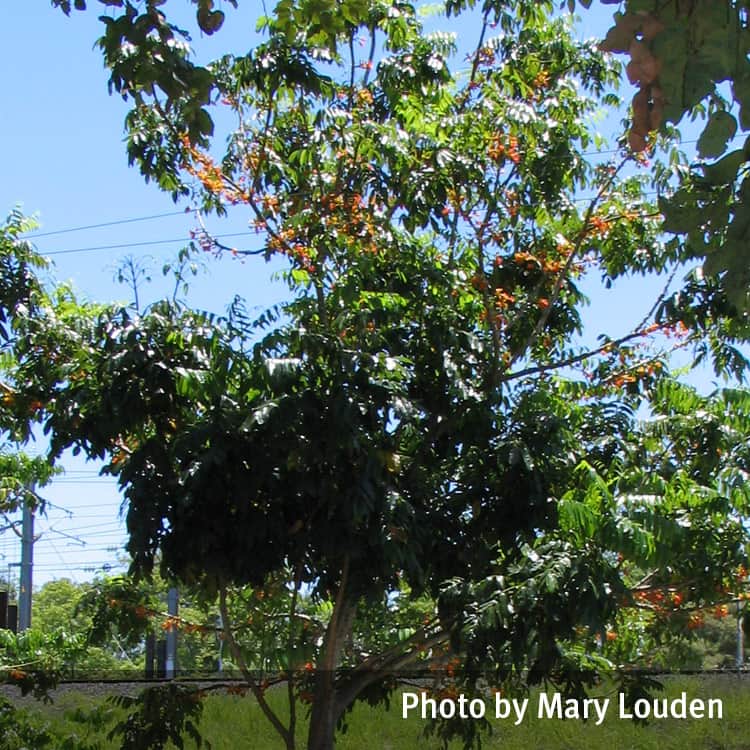Warning
Seek urgent medical attention for all ingestions.
Description
A native species that grows to 10m when planted as a garden ornamental or up to 40m in a natural rain forest setting.
The flowers are large, orange and red, pea-flower shaped, clustered on older branches.
The leaves consist of 7–17 large leaflets alternating on the rachis. Leaflets are 9–15cm long and 3–5cm wide, dark green, and asymmetric at the base..
Toxicity
Symptoms
If eaten, the seeds can cause severe diarrhoea, vomiting, abdominal pain and dizziness. The sawdust can cause dermatitis, eczema and nasal irritation.
Images



Details
Common name: Black bean
Botanical name: Castanospermum australe
Other common names: Moreton Bay chestnut
Family: Fabaceae
General description: A native species that grows to 10m when planted as a garden ornamental or up to 40m in a natural rain forest setting.
Flowers: The flowers are large, orange and red, pea-flower shaped, clustered on older branches.
Leaves: The leaves consist of 7–17 large leaflets alternating on the rachis. Leaflets are 9–15cm long and 3–5cm wide, dark green, and asymmetric at the base.
Fruit/Berries: The fruit are large, heavy, rounded pods, usually 12–18cm long and 4–6cm wide; containing 3–5 large, dark brown seeds about 3cm in diameter.
Other: The sap is clear.